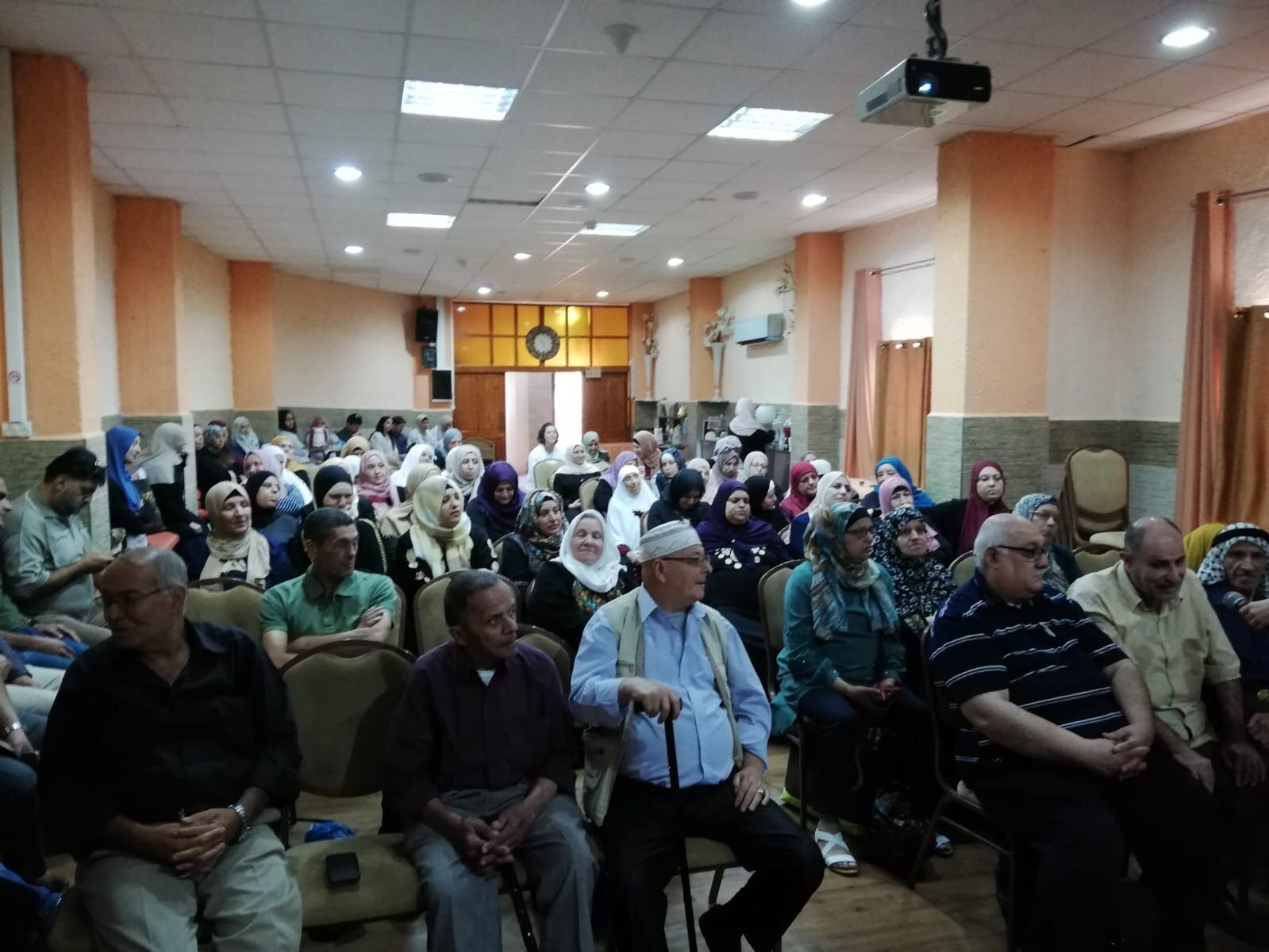Why Aida and Azza?
Aida and Azza Refugee Camps (~7500 people) are adjacent to Bethlehem, highly population-dense, and comprised of refugees from more than 27 villages inside the state of Israel. Aida and Azza have no dedicated clinic within the camps and health access has been a longstanding community concern. In 2018, the Trump Administration announced the cutting of all funds to UNRWA, with additional cuts affecting key public and NGO hospitals. Given the UNRWA cuts by the US government, the need to coordinate, organize, and improve refugee patient care in the West Bank has never been more urgent.
2017-2018: Focus Groups.
Understanding what the community prioritized and empowering them to lead the project was the first step.
Shortly after arriving to Aida camp in Bethlehem in 2017, H4P team members organized group interviews with male and female refugees living in Aida and Azza Camps. Participants were invited to participate using flyers and advertisements on the web. Only Palestinian refugees currently living in Aida and Azza Camps between the ages of 18 and 75 years were included, with a total of 54 participants interviewed. Interviews often lasted longer than an hour, with many open-ended questions and facilitated discussion among eight to ten participants. Six focus groups were completed.
The health issues considered to be most burdensome among Aida and Azza Camp inhabitants were diabetes, hypertension, cancer, and depression, with an additional focus on physical and mental trauma owing to incursions from Israeli forces, including concerns over the high levels of tear gas used by Israeli forces on camp residents. Regarding barriers to health, the main barriers identified were: “military occupation, poverty, health system and provider distrust, trauma and psychological impact, and lack of a sense of agency.”
The team discussed with Aida and Azza Camp residents ideas for addressing common illnesses and barriers to healthcare. A community health worker program was appealing to many of those present within the focus groups. Many agreed that an intervention focused on social accompaniment was an innovative way to improve management of non-communicable diseases, implement trauma-informed mental health care, and address social and political determinants of health. Thus, the team decided to put together a group of community health workers from the community to deliver these needs. Details of these focus groups were published in the Lancet.
2018: Building a team.
Selecting a team of young, dedicated, and caring individuals from the camp was the next step.
The H4P team, alongside leaders from the camp, interviewed and hired six young individuals from the camp to serve as community health workers. Two more were hired in 2018 as the program continued to expand. While they all have different educational background and medical experience, they all share two things in common: they are residents of the camp and they are dedicated to taking care of their community.
To read more about each of the amazing community health workers, check out the team page!
The CHWs then attended multiple sessions on the pathophysiology of hypertension and diabetes, as well as the complications, treatment, and management of both diseases. The CHWs were also trained in conducting patient interviews, collecting medical histories, and motivational interviewing for lifestyle changes. They were then each assigned a number of patients, with increasing patient load over time. As CHWs learned about many other specific health concerns - such as gout - from their patients, lectures on these conditions were given in order that they may continue to grow their knowledge base.
2018 - Present: Patient Care
Since then, the CHWs have been dedicated to patient care in many ways and continue to expand the population they serve, their knowledge of healthcare, and their work.
After training, CHWs were paired together and assigned a number of patients with diabetes and/or hypertension who reside in Aida or Azza Camp. Since then, each team has visited their patients on a weekly basis, resulting in over a thousand patient visits since March 2018. While the CHWs focus on social accompaniment, they also perform a number of services for their patients, including transportation facilitation, medication supervision and supply oversight, diet and exercise counseling, adherence support, vital signs and glucose monitoring, trauma-informed psychosocial counseling, and supportive referrals to clinics/hospitals.
The CHWs have also dedicated themselves to serving the community within Aida and Azza camps at large. They have organized multiple “medical days,” in which lectures on various health-related topics are given by volunteer doctors, over the counter medications are handed out as needed under supervision of pharmacists, and occasional medical exams - such as vision checks - as needed. They have also arranged blood draws by experienced medication technicians for patients who are unable to ambulate to a lab, visits by ophthalmologists and nephrologists, and specialized podiatry checks for patients with diabetes.
Results
Between March 2018 and March 2019, H4P’s community health workers completed over 1100 patient visits in Aida and Azza Camps. Average visit lengths are 30 minutes, allowing a balance between social accompaniment, relationship-building, and efficiency. As of October 2019, we are following approximately 100 patients with eight community health workers, with plans to expand to 200 in 2020. Given the education and informal consults delivered by CHWs to family members, the overall project impact covers approximately 800 people in Aida and Al-Azza Camps, or 11% of the total population. In 2020, H4P will finalize its pilot phase with expansion to all poorly controlled diabetes and hypertension patients within Aida and Al-Azza Camps. Conversations are underway with the UN and refugee organizations to utilize our model broadly through West Bank camps, as well as those in Gaza, Lebanon, and Jordan. The three-year plan is for our experienced CHWs to train the next generation of Palestinian refugee health workers in 3-5 additional camps.







